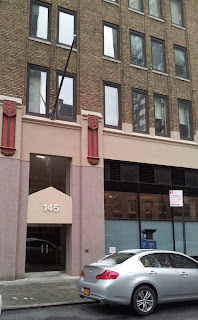1974 SHIVER AND SHAKE ANNUAL was a thick
book of 160 pages priced 70 p. Below is the summary of the contents. Again, black
colour is for SHIVER section and blue is for SHAKE; underlined are the
features that didn’t appear in the weeklies:
Webster (3
episodes, one in full colour), Frankie
Stein (5 episodes - 2 in colour and 3 b/w); Shiver (in full colour); Creepy
Creations feature (2 instalments); Ed (5 episodes); Grimly
Feendish (4 episodes, one in full colour); The Hand (2 episodes); Sweeny
Toddler (2 episodes); Adrian’s Wall; The Duke’s Spook (2
episodes); Soggy the Sea Monster (2 episodes); Biddy’s Beastly Bloomers;
Midnight
Tales (adventure, 4 pages); Ye Haunted Lake; Ghouldilocks
(2 episodes); Shake (2 episodes, both in colour); Lolly Pop; Miss Chief (3
episodes); The Desert Fox (2 episodes); Nutter (3
episodes), ; Sample Simon (2 episodes); Damsel in Distress; The
Scroungers (2 episodes); Though Nutt and Softy Centre (2
episodes); Mirth Shakers feature (2 instalments); Moana Lisa; Comics
College (3 episodes, one in full colour); Gal Capone; Seeing
Stars feature (Horoscope); The Forest Legion (14 pages);
The
Fixer (2 episodes); Loopy Locations feature;
The
Silly Circus; Match of the Year Circus versus Panto Folk;
Kids’
Court; Jail Birds; Horrornation Street; Christmas
Eve at Scream Inn; The Shiver Givers.
Same as the
1973 Christmas Holiday Special, the Annual was modelled after the weeklies: the
cover was split in two and there was a Shake section inside separated from Shiver
with blocks of colour pages on both ends. Here is the front page of Shake:
Let’s take
a peek inside. Again, all episodes of Frankie Stein were reprints of the
original stories illustrated by Ken Reid in WHAM! issues 19, 2o, 22, 23 and 24,
all resized from the original 1 ½ pages in WHAM! to 3 pages in the Annual, with
the usual consequences (enlarged panels with awkward empty spaces, extended lines,
etc.).
The Annual
had two Creepy Creations with a Winter theme. In his comment to my
previous post about 1973 Special Andy noted that the Christmas Creation that I
showed was drawn by Bob Nixon, not Ken Reid. I believe the two in this first
Annual were also by Nixon. Here is one. The face is Reid-ish, but otherwise it looks
more Nixon than Reid to my eye, what do you think?
In the
Christmas episode of Scream Inn Santa charmed all resident
creeps so the Innkeeper had to use his cunning to scare Santa off and prevent
him from winning a million pounds. Below are two important panels from the set:
Shiver got his
own strip for the first time:
I won’t go
into details of other regular Shiver and
Shake strips from the weeklies because I hope to cover them in their dedicated
posts at a later stage. I will concentrate
on those that didn’t appear in the weeklies instead, and this Annual had quite
a large number of them. Ed and Midnight Tales were the
only ones in the Shiver section. There’s nothing much to say about Ed.
Midnight
Tales was a mystery horror tale that looks like a reprint but I don’t
know where from or who the illustrator was. Here are the first two pages:

Shake section
had a lot more of unfamiliar entries. The Forest Legion was probably the
most prominent one because it was as many as 14 pages long. It was about a
crowd of goody forest animals and their efforts to stop two baddies – a crook called
Boss and his assistant Butch, from robbing a loopy rich old Baron who lived in
his lone castle on an island in the middle of the lake. Forest Legion later
appeared in other Shiver and Shake
annuals. I don’t know the artist’s name. Here are two opening pages:
Miss Chief told
adventures of a Red Indian girl. The strip wasn’t sensationally original in its
concept and a lot of its humour was supposed to come from the ‘pidgin English’
so well familiar to folks who read Little Plum in the Beano (such as this: … ‘Medicine man angry! Him boilum up a storm!’
… or ‘Blackfoot tribe say our Chief got
smelly socks! Heap insult!’...).
Seeing
Stars, a Horoscope drawn by Reg Parlett, was a nice addition to the
package. Another reprint, I believe:
Kids’ Court was a
feature about law enforcement in which adults faced justice at the hands of
kids. It was interesting in the sense that it was a pilot episode of a strip
that became a regular in Whoopee!
as of 1976 and continued there for more than three years.
The remaining
new features are hardly worth mentioning. Nutter was a poorly drawn strip
without speech balloons about an unfortunate toothy kid. The Scroungers was about
a family of … scroungers, illustrated by Phil Millar. The title of The Silly Circus also speaks for itself.
Here is the whole strip as I find the artwork quite nice, although I am not
sure about the artists’ name:
















































